Australian Tropical Rainforest Plants - Online edition
Canavalia papuana Merr. & L.M.Perry
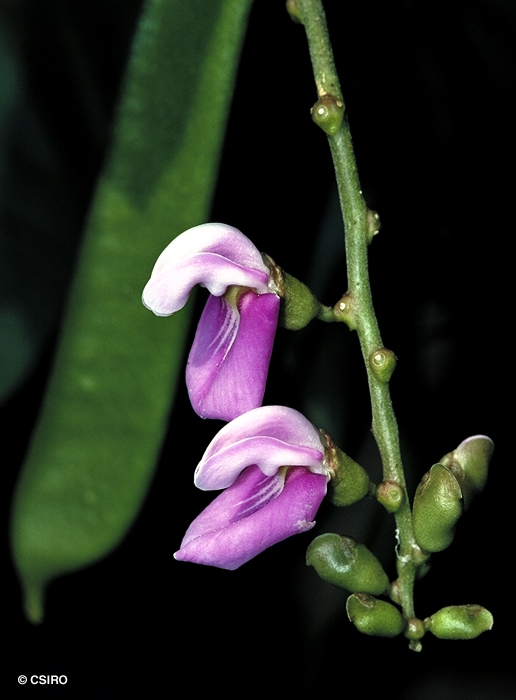
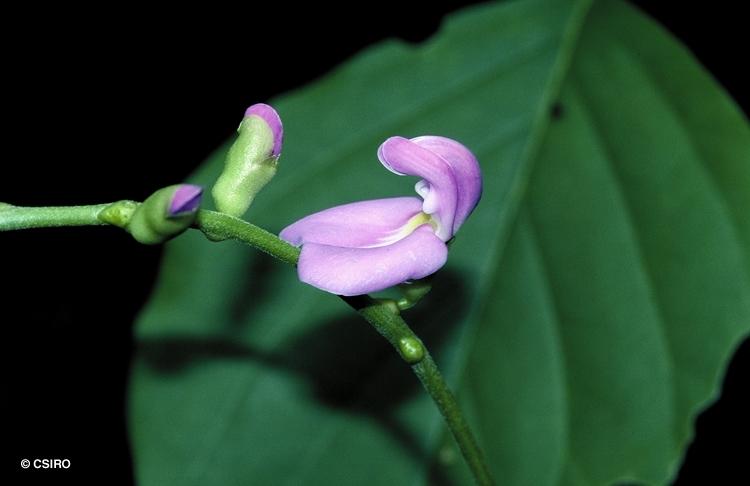
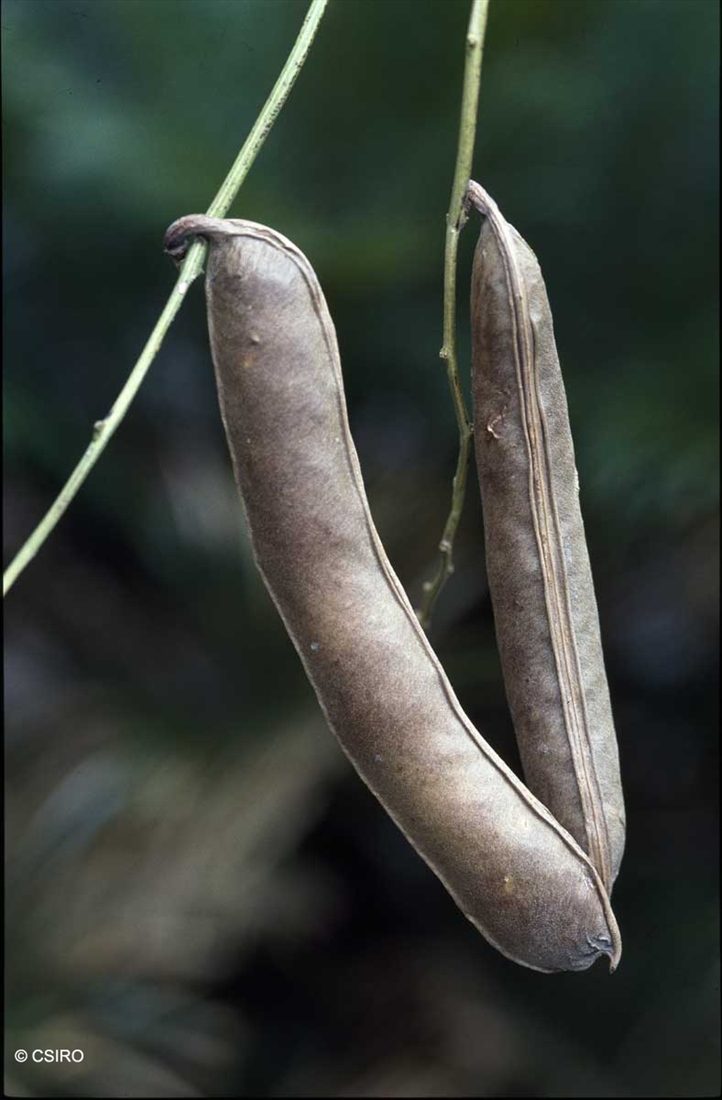
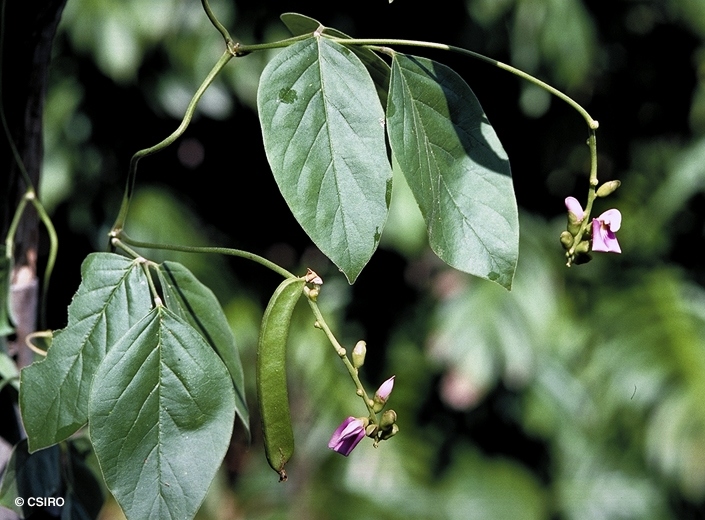


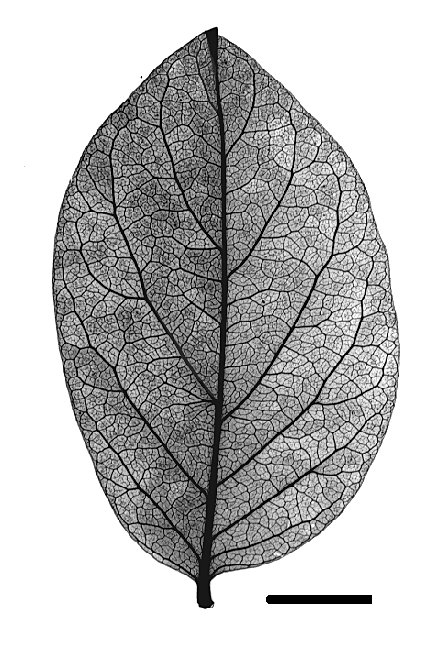
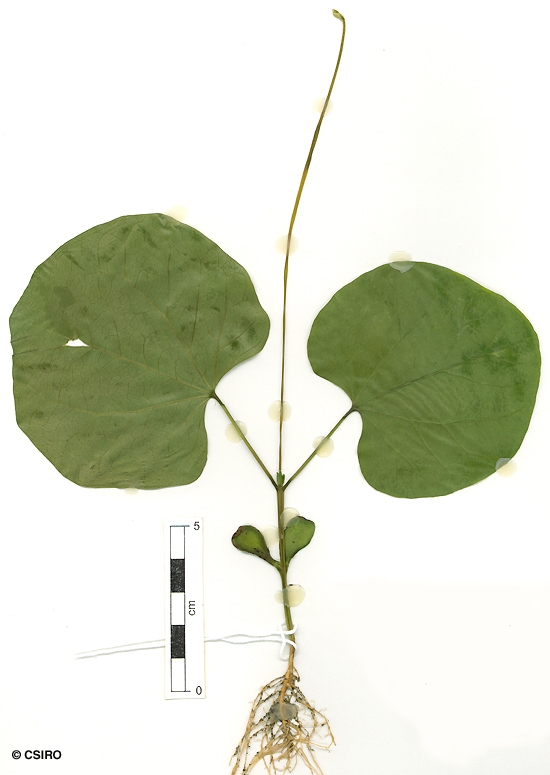
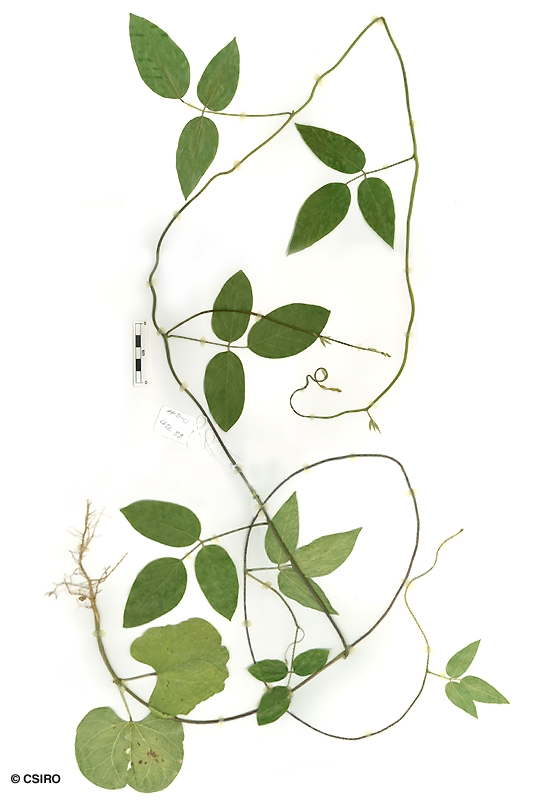
Merrill, E.D. & Perry, L.M. (1942) Journal of the Arnold Arboretum 23(4): 406. Type: British New Guinea: Lake Daviumbu, Middle Fly River, Brass 7730 (TYPE), September 1936, climbing over low second growths.
Bean, Wild Jack; Wild Jack Bean
A slender vine not exceeding a stem diameter of 2 cm.
Leaflet blades about 5-18 x 2.5-10 cm, leaflet stalks about 0.5-2.2 cm long. Middle leaflet larger than the lateral leaflets. Underside of the leaflet blades sparsely clothed in hairs at least along the midrib. Stipules hairy, about 1.5-4 mm long, recurved. Lateral veins about 5-7 on each side of the midrib. Stalk of the middle leaflet longer than those on the lateral leaflets.
Inflorescence an elongated raceme about 40 cm long. Flowers about 20 mm diam., borne in pairs on a tubercle-like projection ornamented with a number of nectiferous glands. Calyx tube about 7 mm long, two upper lobes rounded, about 2.5 mm long, lower three lobes narrow, pointed, about 1.5 mm long. Petals: standard about 18 x 20 mm, indented at the apex.; wings pink , about 21 mm long; keel wider than the wings but also about 21 mm long. Stamens 10, about 20 mm long. The filaments of nine stamens fused to form a tube about 17 mm long, open on one side. Free part of the filaments about 4-6 mm long, alternately longer and shorter. The filament of the other stamen at least partly free. Disk pale yellow, about 2-5 mm high. Ovary hairy, about 1.5 mm long. Stigma terminal, sticky, slightly flared. Ovules 10-12.
Cotyledons elliptic, obovate, thick and fleshy, about 19-21 x 9-12 mm, upper surface flat, lower surface convex. Cotyledons sessile without venation and attached to the stem obliquely or asymmetrically. First leaves orbicular-cordate or reniform-cordate, apex acute to retuse, base cordate to auriculate, sparsely hairy. Venation palmate. Petioles long. Stipules about 4-5 mm long. Third leaf trifoliolate. At the tenth leaf stage: stems twining, clothed in backward-pointing hairs, middle leaflet slightly larger than the lateral leaflets. Middle leaflet on a longer stalk than the lateral leaflets, middle leaflet stalk pulvinate. Leaflet blades ovate to elliptic, apex apiculate (mucro usually reflexed) base obtuse to cuneate. Both the upper and lower leaflet blade surfaces clothed in pale hairs. Lateral veins about 5-7 on each side of the midrib. Stipules about 2-3 mm long, caducous, leaving a green gland which could be mistaken for a stipule. Stipels absent. Seed germination time 34 to 43 days.
Not noted to be toxic; unlikely to be an important species for grazing. Hacker (1990).





